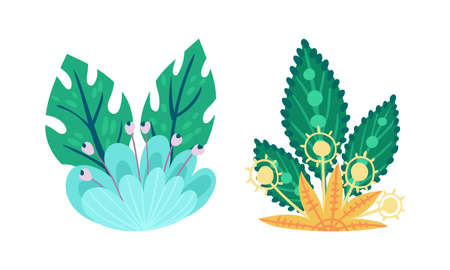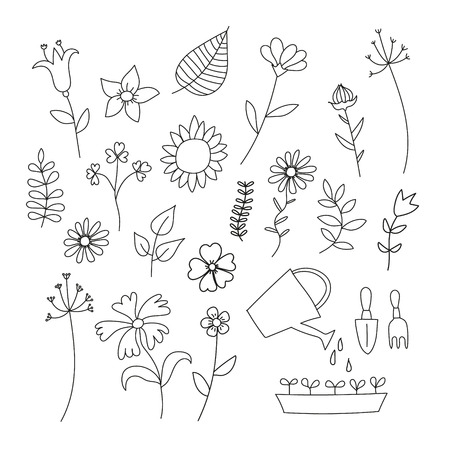Introduction to Organic Gardening and Biodiversity
Organic gardening stands at the forefront of sustainable horticultural practices in the UK, offering a holistic approach that nurtures both plants and wildlife. At its core, organic gardening eliminates synthetic chemicals and focuses on natural methods to cultivate healthy soils and resilient plants. This method not only yields abundant harvests but also plays a pivotal role in supporting biodiversity—a crucial element for ecological balance. Within the British context, where native flora and fauna face increasing pressures from urbanisation and intensive agriculture, organic gardening provides a haven for pollinators, birds, insects, and microorganisms. By prioritising soil health, crop diversity, and environmentally friendly techniques, organic gardeners contribute significantly to the conservation of local species and habitats. Embracing these principles is more than a gardening choice; it is an active step towards preserving the UK’s rich natural heritage for future generations.
2. Soil Health and Composting
Maintaining robust soil health is the cornerstone of organic gardening, particularly in British gardens where climate variability and native biodiversity present unique challenges and opportunities. Healthy soil teems with microorganisms that break down organic matter, facilitating nutrient cycling and creating a thriving environment for both plants and wildlife. Organic composting is a time-honoured technique that transforms kitchen scraps and garden waste into nutrient-rich humus, thus reducing landfill contributions while enhancing soil structure.
The Role of Organic Composting in British Gardens
Composting is more than just recycling waste; it actively enriches garden soil, improving its texture, water retention, and fertility. In the UK, traditional compost heaps or modern compost bins are commonly used to process everything from tea bags to autumn leaves. This approach supports localised ecosystems by encouraging earthworms and beneficial bacteria essential for plant health.
Compost Ingredients Suitable for UK Gardens
| Green Materials | Brown Materials |
|---|---|
| Grass clippings | Fallen leaves |
| Vegetable peelings | Cardboard (shredded) |
| Coffee grounds | Straw/hay |
| Young weeds (seed-free) | Twigs/wood chips |
Top Tips for Effective Composting in the UK Climate:
- Aim for a balanced mix of green (nitrogen-rich) and brown (carbon-rich) materials to optimise decomposition.
- Turn your compost regularly to aerate the pile—this accelerates breakdown and prevents unpleasant odours.
- Position your compost bin in partial shade to maintain moisture without risking waterlogging, especially during British winters.
- Avoid adding cooked food or meat, which can attract pests common in urban and rural UK settings.
Nurturing healthy soil through these tailored organic composting techniques not only supports plant growth but also fosters microhabitats for insects, fungi, and other organisms vital to garden biodiversity. By adopting these sustainable practices, British gardeners contribute significantly to local wildlife corridors while enjoying more resilient and productive gardens.

3. Native Plant Selection
Choosing native plant species is a cornerstone of organic gardening in the UK, playing a vital role in supporting local biodiversity. Native plants are those that have evolved naturally within Britain’s ecosystems and are well-adapted to the unique climate, soil, and wildlife found here. By prioritising these species, gardeners can create habitats that offer food and shelter to native insects, birds, and mammals, ultimately enriching the garden’s ecological balance.
Benefits of Native UK Species
Native UK plants provide numerous advantages over their non-native counterparts. Firstly, they require less intervention in terms of water, fertilisers, or pesticides, as they are inherently suited to the local environment. This aligns with organic gardening principles by reducing chemical inputs and conserving resources. Secondly, these plants foster resilient ecosystems by supporting pollinators such as bees and butterflies, as well as beneficial insects that act as natural pest controllers.
Supporting Local Wildlife
Many British insects and birds have co-evolved with specific native flora; for example, the holly blue butterfly relies on holly and ivy throughout its lifecycle. By including a range of native species like hawthorn, primrose, foxglove, or dog rose, gardeners directly contribute to the survival of these species while promoting a diverse array of life within their gardens.
Positive Impact on Ecosystems
The use of native plants not only enhances individual gardens but also strengthens green corridors across urban and rural landscapes. This connectivity allows wildlife to move safely between habitats, boosting resilience against environmental changes. In this way, selecting native plants is an effective organic technique for building sustainable gardens that support the health and diversity of Britain’s natural heritage.
4. Creating Wildlife Habitats
Establishing dedicated wildlife habitats within your organic garden is essential for supporting and increasing the diversity of British species. These habitats provide food, shelter, and breeding grounds for a range of insects, birds, amphibians, and mammals that are vital to a thriving ecosystem. Below are some practical approaches tailored to UK gardens.
Ponds: Aquatic Havens
A garden pond is one of the most effective features you can introduce for wildlife. Even a small pond supports frogs, newts, dragonflies, and a host of aquatic invertebrates. To maximise biodiversity:
- Choose a varied depth: Incorporate shallow edges and deeper sections to cater for different species.
- Use native plants: Plant British water lilies, flag iris, and marginal rushes to offer cover and spawning sites.
- Avoid fish: They often eat tadpoles and invertebrates, which can reduce wildlife numbers.
- Ensure easy access: Gentle slopes or pebble beaches allow animals to enter and exit safely.
Hedgerows: Living Boundaries
Traditional hedgerows are invaluable for nesting birds, pollinators, and small mammals. When establishing or restoring hedgerows:
- Select native species: Include hawthorn, blackthorn, hazel, holly, and dog rose for seasonal interest and habitat value.
- Diversify structure: Mixed heights and occasional trees provide food sources and shelter throughout the year.
- Allow flowering and fruiting: Avoid over-pruning so hedgerows produce blossoms and berries essential for wildlife nutrition.
Log Piles: Shelters for Invertebrates
Decaying wood offers a haven for beetles, solitary bees, fungi, and even hedgehogs. To create an effective log pile:
- Use untreated British hardwoods: Oak or beech logs break down slowly and support more species.
- Position in dappled shade: This helps retain moisture while preventing logs from rotting too quickly.
- Add leaf litter: Scattering leaves around the base attracts woodlice, worms, and other decomposers.
Biodiversity Benefits at a Glance
| Habitat Type | Main Wildlife Supported | Biodiversity Benefit |
|---|---|---|
| Pond | Amphibians (frogs, newts), dragonflies, water beetles | Aquatic breeding ground; pest control; pollinator support |
| Hedgerow | Sparrows, robins, dormice, butterflies | Nesting sites; food corridors; windbreaks; pollinator pathways |
| Log Pile | Beetles, solitary bees, hedgehogs | Shelter; overwintering habitat; natural decomposition processes |
Integrating Multiple Habitats
The greatest gains in biodiversity come from combining these elements. For example, placing log piles near ponds encourages amphibians to shelter after spawning. Similarly, running hedgerows alongside wildflower strips creates continuous corridors for pollinators. By thoughtfully integrating these habitats with organic gardening practices—such as avoiding chemicals and encouraging natural cycles—you will create a resilient landscape that reflects the richness of Britain’s native flora and fauna.
5. Natural Pest and Disease Management
In the context of organic gardening within the UK, effective pest and disease management is fundamental for sustaining garden biodiversity while minimising environmental impact. Rather than relying on chemical interventions, a range of natural strategies can be employed to manage common pests such as aphids, slugs, and vine weevils, as well as diseases like powdery mildew or blight.
Encouraging Natural Predators
One of the most effective organic approaches is to attract and support natural predators. For instance, ladybirds, lacewings, and hoverflies are voracious consumers of aphids. Creating habitats such as log piles, wildflower borders, and insect hotels encourages these beneficial insects to thrive in your garden. Similarly, hedgehogs, frogs, and birds will help keep slug populations under control if you provide shelter and water sources.
Cultural Practices and Plant Health
Maintaining healthy soil through regular addition of organic matter such as compost or well-rotted manure strengthens plant resilience against pests and diseases. Crop rotation is also crucial; by changing the location of plant families each year, you reduce the build-up of soil-borne pathogens and pest populations. Furthermore, spacing plants appropriately improves air circulation and reduces fungal problems.
Physical Barriers and Traps
Simple physical methods can deter many pests without harming the wider ecosystem. Use copper tape or crushed eggshells around vulnerable plants to discourage slugs and snails. Netting can protect fruit crops from birds or cabbage white butterflies laying eggs on brassicas. Beer traps are a traditional solution for slugs in British gardens.
Companion Planting
Strategically planting certain species together can naturally repel pests or attract beneficial insects. For example, marigolds emit scents that deter whitefly, while planting garlic among roses helps ward off aphids. Nasturtiums can be used as a sacrificial crop to lure blackfly away from vegetables.
Homemade Organic Sprays
If intervention becomes necessary, homemade sprays made from ingredients like garlic, soap, or neem oil can provide targeted protection with minimal risk to non-target species. Always test these solutions on a small area first and apply them in the evening when pollinators are less active.
By integrating these organic techniques into your gardening routine, you not only manage pests and diseases more sustainably but also contribute positively to the overall biodiversity and health of your UK garden environment.
6. Sustainable Water Use
Sustainable water management is a cornerstone of organic gardening, especially when aiming to enhance garden biodiversity in the UK’s variable climate. Effective rainwater harvesting and water conservation practices not only support healthy plant growth but also create habitats for a wide array of wildlife.
Rainwater Harvesting Systems
Installing water butts or rain barrels is a highly effective method for collecting rainwater from roofs and greenhouse structures. In British gardens, where rainfall can be plentiful yet unpredictable, capturing this natural resource reduces reliance on mains water and helps maintain soil moisture levels during drier periods. Ensure your storage containers are covered to prevent mosquito breeding and position them near garden beds for easy access.
Mulching for Moisture Retention
Applying an organic mulch layer, such as wood chips, straw, or well-rotted compost, conserves moisture by reducing evaporation from the soil surface. Mulching not only saves water but also improves soil structure and provides habitat for beneficial insects and microorganisms—key elements in supporting biodiversity.
Drought-Tolerant Plant Choices
Selecting native or drought-resistant plant species, such as lavender, thyme, or sedum, minimises the need for supplemental watering while still offering pollen, nectar, and shelter to local wildlife. Grouping plants with similar water needs together further enhances water efficiency across your garden borders.
Efficient Watering Techniques
Watering early in the morning or late in the evening reduces evaporation and ensures that more moisture reaches plant roots. Using a watering can with a rose attachment delivers water gently and directly to the soil rather than foliage, helping to prevent disease spread while conserving resources.
Wildlife-Friendly Features
Ponds, bog gardens, and shallow dishes of water provide essential drinking and bathing spots for birds, amphibians, and pollinators. These features not only boost biodiversity but also rely on harvested rainwater for sustainable maintenance.
In summary, adopting sustainable water use practices tailored to British conditions supports both the health of your plants and the wider ecosystem. By integrating rainwater harvesting, careful plant selection, mulching, and efficient irrigation methods, you can cultivate a thriving organic garden that champions biodiversity while safeguarding precious water resources.
7. Community Engagement and Ongoing Learning
Building a biodiverse garden is not solely an individual pursuit; it thrives on collective effort and shared wisdom. By engaging with local gardening communities, you not only access a wealth of practical experience but also contribute to a wider movement for environmental stewardship. Participating in neighbourhood gardening groups, attending horticultural workshops, or joining allotment societies are excellent ways to exchange tips on organic gardening methods that support biodiversity. These networks often host events such as seed swaps, plant sales, and open garden days, fostering a sense of camaraderie and joint responsibility for local green spaces.
Sharing your own successes and challenges helps create an open dialogue around sustainable practices tailored to the UK’s unique climate and wildlife. Collaborative projects—such as community composting schemes or pollinator-friendly planting initiatives—can amplify positive impacts well beyond your own plot. Moreover, staying informed about new research or policy developments through trusted UK gardening organisations ensures your approach remains both innovative and effective. Ultimately, embracing ongoing learning within a supportive community setting empowers gardeners to make meaningful contributions towards enhancing biodiversity across Britain’s urban and rural landscapes.


